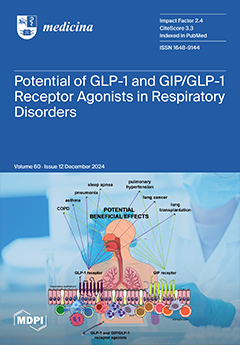Background and Objectives: This study aimed to investigate whether neutrophil percentage-to-albumin ratio (NPAR) levels on admission have prognostic significance regarding one-year major adverse cardiovascular and cerebrovascular events (MACCEs) in non-ST-elevation myocardial infarction (NSTEMI) patients.
Materials and Methods: A total of 464 patients aged 59.2 ± 11.6 years constituted the cohort of this retrospectively designed study. Considering a 1-year follow-up period, the patients were divided into two groups: those with MACCEs and those without. The complete blood count, serum C-reactive protein and serum albumin levels were measured at admission. The NPAR, C-reactive protein/albumin ratio (CAR) and systemic immune-inflammation (SII) index were calculated for all patients, and the associations of these inflammatory-based biomarkers with 1-year MACCEs were evaluated.
Results: During the 12-month follow-up period, MACCEs were observed in 75 (16.2%) patients, of which 35 (7.5%) patients died. The patients with MACCEs had higher CRP (
p < 0.001), a higher percentage of neutrophils (
p < 0.001), lower albumin levels (
p < 0.001), a higher CAR (
p < 0.001), a higher SII index (
p = 0.008) and a higher NPAR (
p < 0.001). A high anatomical SxSI score, a high low-density lipoprotein cholesterol level, hypoalbuminemia, high neutrophil counts, a high NPAR level and a high CAR level were independent predictors for one-year MACCEs (all
p < 0.05). The NPAR (area under the curve [AUC] = 0.775,
p < 0.001) and albumin level (AUC = 0.708,
p < 0.001) had better and sufficient discriminatory power and predictive accuracy in determining one-year MACCEs, when compared to the neutrophil (AUC = 0.693,
p < 0.001), CAR (AUC = 0.639,
p < 0.001) and SII index (AUC = 0.660,
p < 0.001), in terms of the receiver operating characteristic curve. The DeLong test revealed that the predictive performance of the NPAR was superior to that of the other inflammatory parameters. In particular, individuals with an NPAR value greater than 17.6 were at greater risk of developing MACCEs (
p < 0.001).
Conclusions: The NPAR can be used as a newly identified promising inflammatory biomarker to predict one-year MACCEs in NSTEMI patients undergoing revascularization therapy.
Full article






